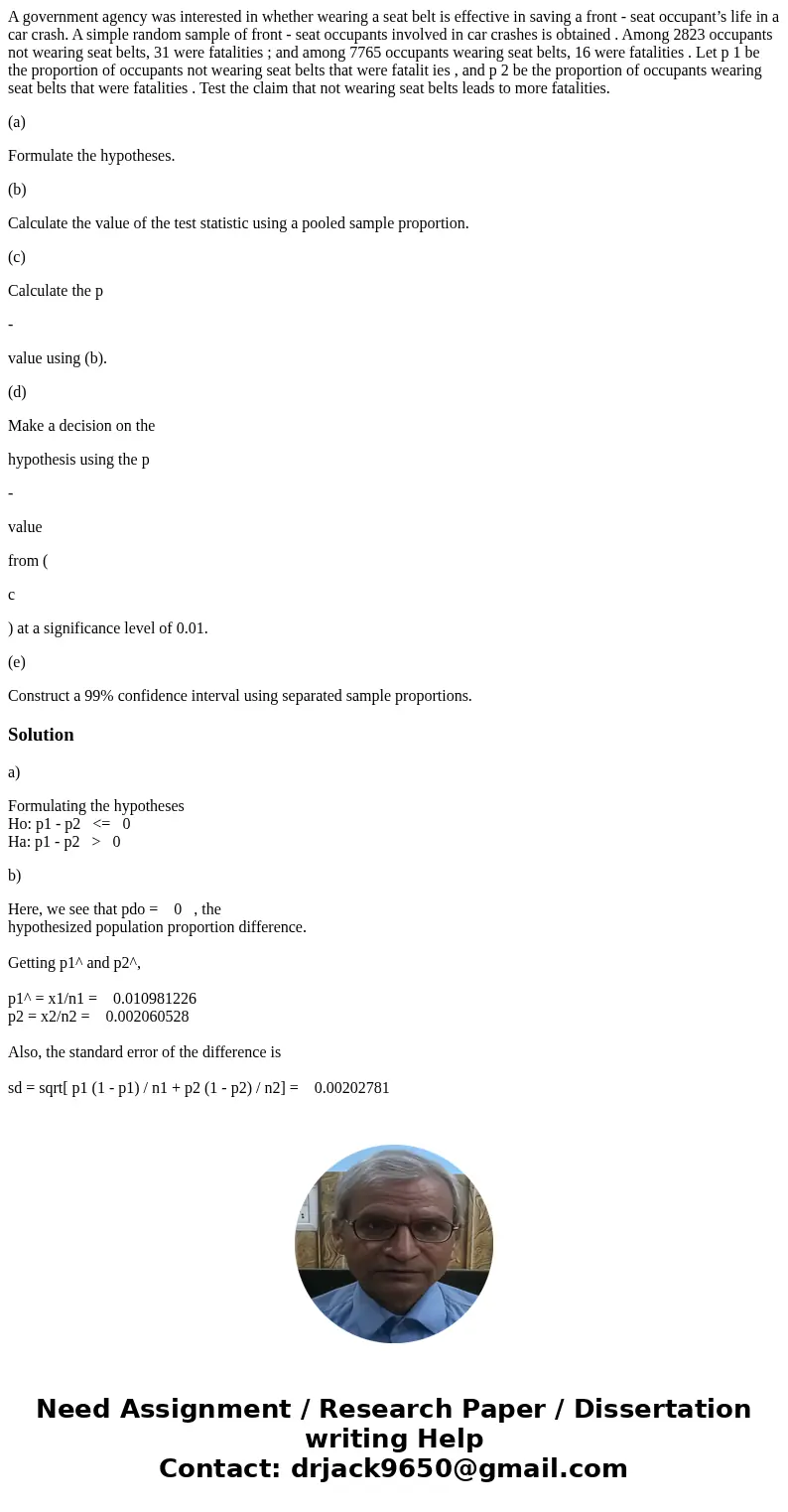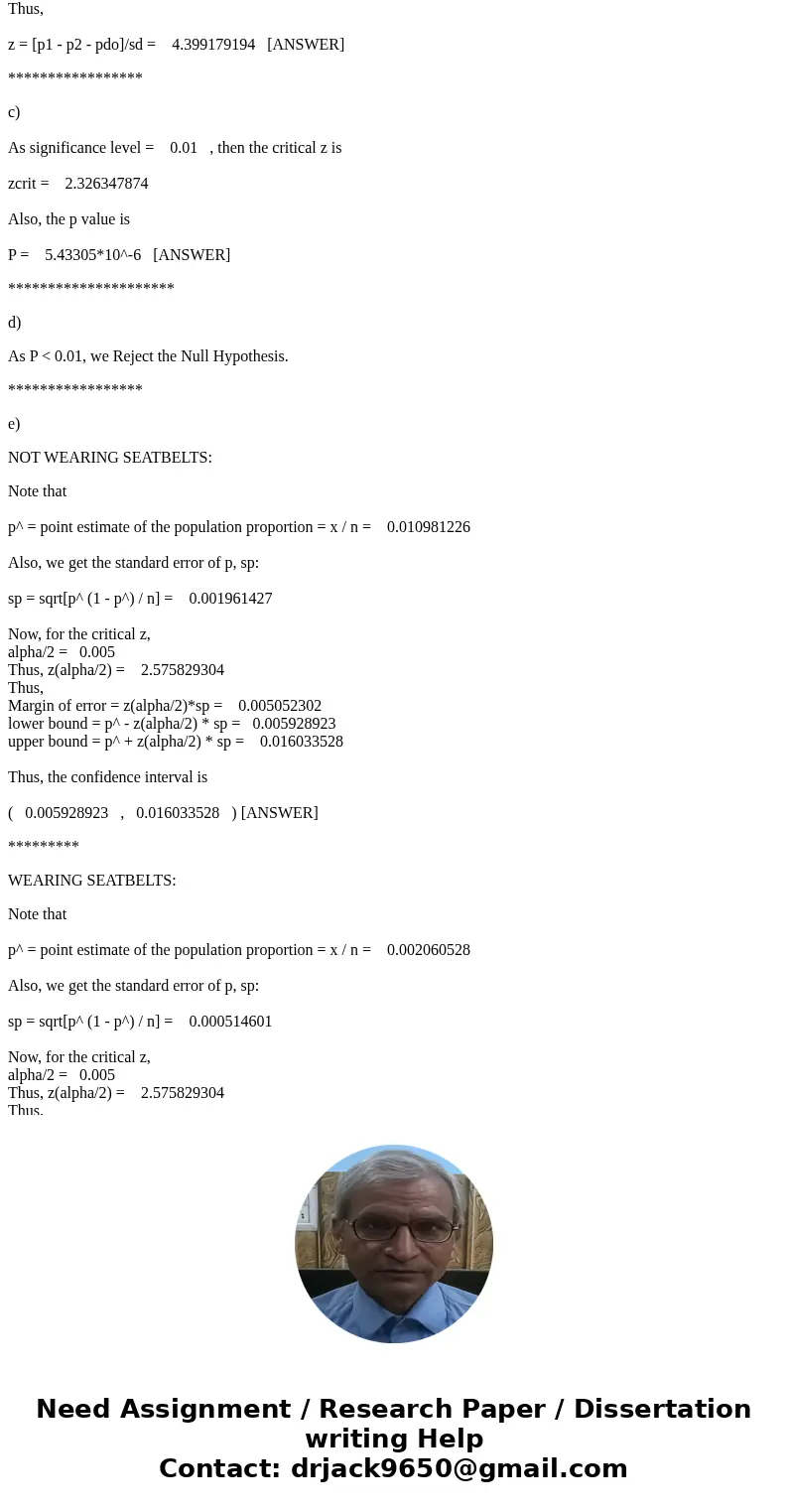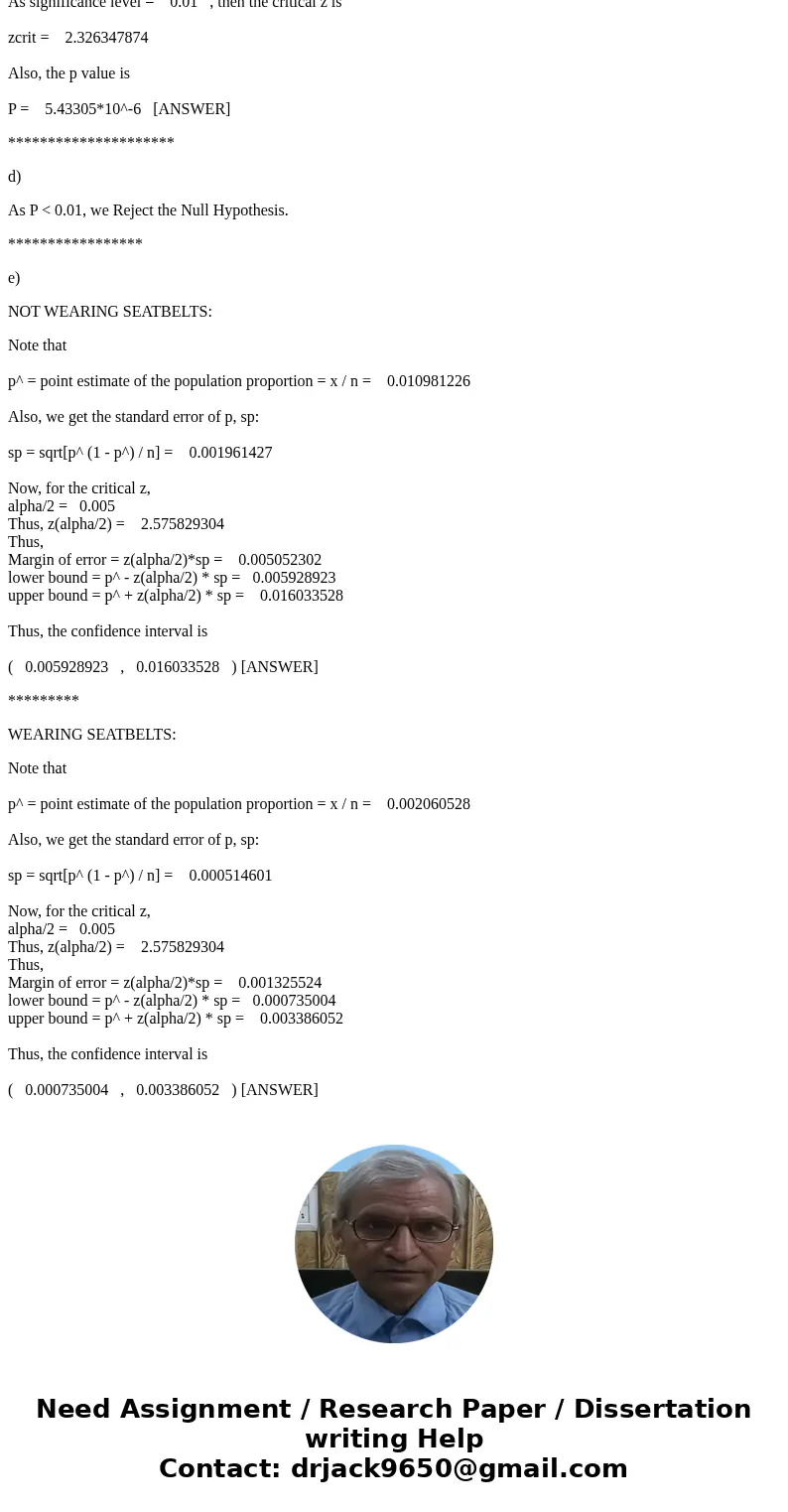A government agency was interested in whether wearing a seat
A government agency was interested in whether wearing a seat belt is effective in saving a front - seat occupant’s life in a car crash. A simple random sample of front - seat occupants involved in car crashes is obtained . Among 2823 occupants not wearing seat belts, 31 were fatalities ; and among 7765 occupants wearing seat belts, 16 were fatalities . Let p 1 be the proportion of occupants not wearing seat belts that were fatalit ies , and p 2 be the proportion of occupants wearing seat belts that were fatalities . Test the claim that not wearing seat belts leads to more fatalities.
(a)
Formulate the hypotheses.
(b)
Calculate the value of the test statistic using a pooled sample proportion.
(c)
Calculate the p
-
value using (b).
(d)
Make a decision on the
hypothesis using the p
-
value
from (
c
) at a significance level of 0.01.
(e)
Construct a 99% confidence interval using separated sample proportions.
Solution
a)
Formulating the hypotheses
Ho: p1 - p2 <= 0
Ha: p1 - p2 > 0
b)
Here, we see that pdo = 0 , the
hypothesized population proportion difference.
Getting p1^ and p2^,
p1^ = x1/n1 = 0.010981226
p2 = x2/n2 = 0.002060528
Also, the standard error of the difference is
sd = sqrt[ p1 (1 - p1) / n1 + p2 (1 - p2) / n2] = 0.00202781
Thus,
z = [p1 - p2 - pdo]/sd = 4.399179194 [ANSWER]
*****************
c)
As significance level = 0.01 , then the critical z is
zcrit = 2.326347874
Also, the p value is
P = 5.43305*10^-6 [ANSWER]
*********************
d)
As P < 0.01, we Reject the Null Hypothesis.
*****************
e)
NOT WEARING SEATBELTS:
Note that
p^ = point estimate of the population proportion = x / n = 0.010981226
Also, we get the standard error of p, sp:
sp = sqrt[p^ (1 - p^) / n] = 0.001961427
Now, for the critical z,
alpha/2 = 0.005
Thus, z(alpha/2) = 2.575829304
Thus,
Margin of error = z(alpha/2)*sp = 0.005052302
lower bound = p^ - z(alpha/2) * sp = 0.005928923
upper bound = p^ + z(alpha/2) * sp = 0.016033528
Thus, the confidence interval is
( 0.005928923 , 0.016033528 ) [ANSWER]
*********
WEARING SEATBELTS:
Note that
p^ = point estimate of the population proportion = x / n = 0.002060528
Also, we get the standard error of p, sp:
sp = sqrt[p^ (1 - p^) / n] = 0.000514601
Now, for the critical z,
alpha/2 = 0.005
Thus, z(alpha/2) = 2.575829304
Thus,
Margin of error = z(alpha/2)*sp = 0.001325524
lower bound = p^ - z(alpha/2) * sp = 0.000735004
upper bound = p^ + z(alpha/2) * sp = 0.003386052
Thus, the confidence interval is
( 0.000735004 , 0.003386052 ) [ANSWER]



 Homework Sourse
Homework Sourse